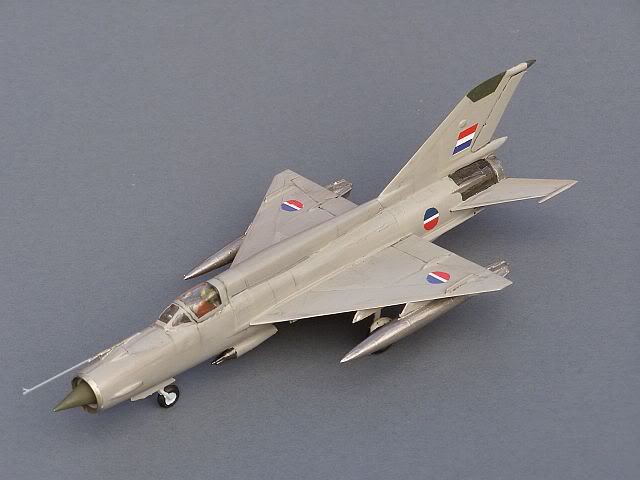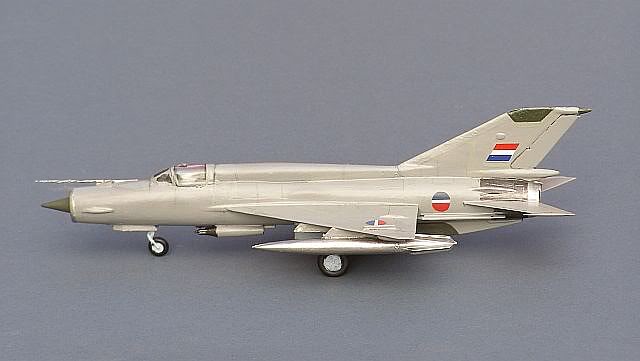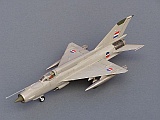Former Republic of Yugoslavia (FRY) Air Force,
Podgorica Air Base, Montenegro, 1994
KP. Looks like a crude kit at first, but in truth its not that bad. Mine was a genuine "cold war" issue from behind the Iron Curtain (early 1980s) which added a bit of authenticity. Repainted several times (used it as a test bed for some modelling techniques).
Forces of the FRY continued to use several variants of the MiG 21 after the break up of Yugoslavia in the early 1990s. FRY aircraft flying from Podgorica and Croatian aircraft from other former Yugoslav air bases were regularly tracked by NATO naval units operating in the Adriatic sea, during Operation SHARP GUARD, the UN embargo on trade with the warring factions of the Former Yugoslavia.


Republika Srpska Air Force (Bosnian Serb)
Banja Luka Air Base, Bosnia Herzegovina, 1994
YuMo. A nice kit, albeit one that is now very rare and difficult to find, with comprehensive decal options. (Link to build Page)
The G-
As well as its trainer role, a centre mounted gun pod could be fitted to mount a
double 23mm Gryazev-
During the Yugoslav Wars, G-



Republika Srpska Air Force (Bosnian Serb)
Banja Luka Air Base, Bosnia Herzegovina, 1994
Litaki 1/72. Another nice kit, but expensive and not an easy build. Again, with comprehensive decal options. (Link to build Page)
The SOKO Orao was another indigenous Yugoslav design from the late 1970s/early 1980s.
Developed as a joint Yugoslav-
With an airframe configuration that is very reminiscent of the Anglo-
Originally built in Mostar, Bosnia Herzegovina, the SOKO factory was destroyed early in the Yugoslav wars, with plant being stripped by the withdrawing Yugoslav Army (JNA) and moved to the UTVA aircraft company in Pancevo, North East Serbia (a factory that was later destroyed by NATO bombing).
During the 1990s Yugoslav Wars, JNA aircraft conducted a number of attack sorties
against Croatia early in the war before mostly withdrawing to Serbia-
J-
A shortage of spare and fuel due to UN Blockades quickly reduced the availability of these aircraft and NATO’s Operation Deny Flight all but grounded them, although a few flights continued until the mid 1990s. After the war, the aircraft were absorbed into the combined Bosnia–Herzegovina Air Force but placed in storage, with some reportedly eventually sold to Serbia. Some further operations by Oraos took place during the Kosovo Wars and a large number of the remaining aircraft were destroyed by NATO bombing of Podgorica in 1999. Despite this, the modern Serbian Air Force continues to operate around 17 of the type, and these are expected to be modernised and continue in service for some time to come.




Adversaries: The Former Yugoslavia
www.gengriz.co.uk
Background image -
Click on the thumbnail above or scroll down to see the models


Part 3 -
